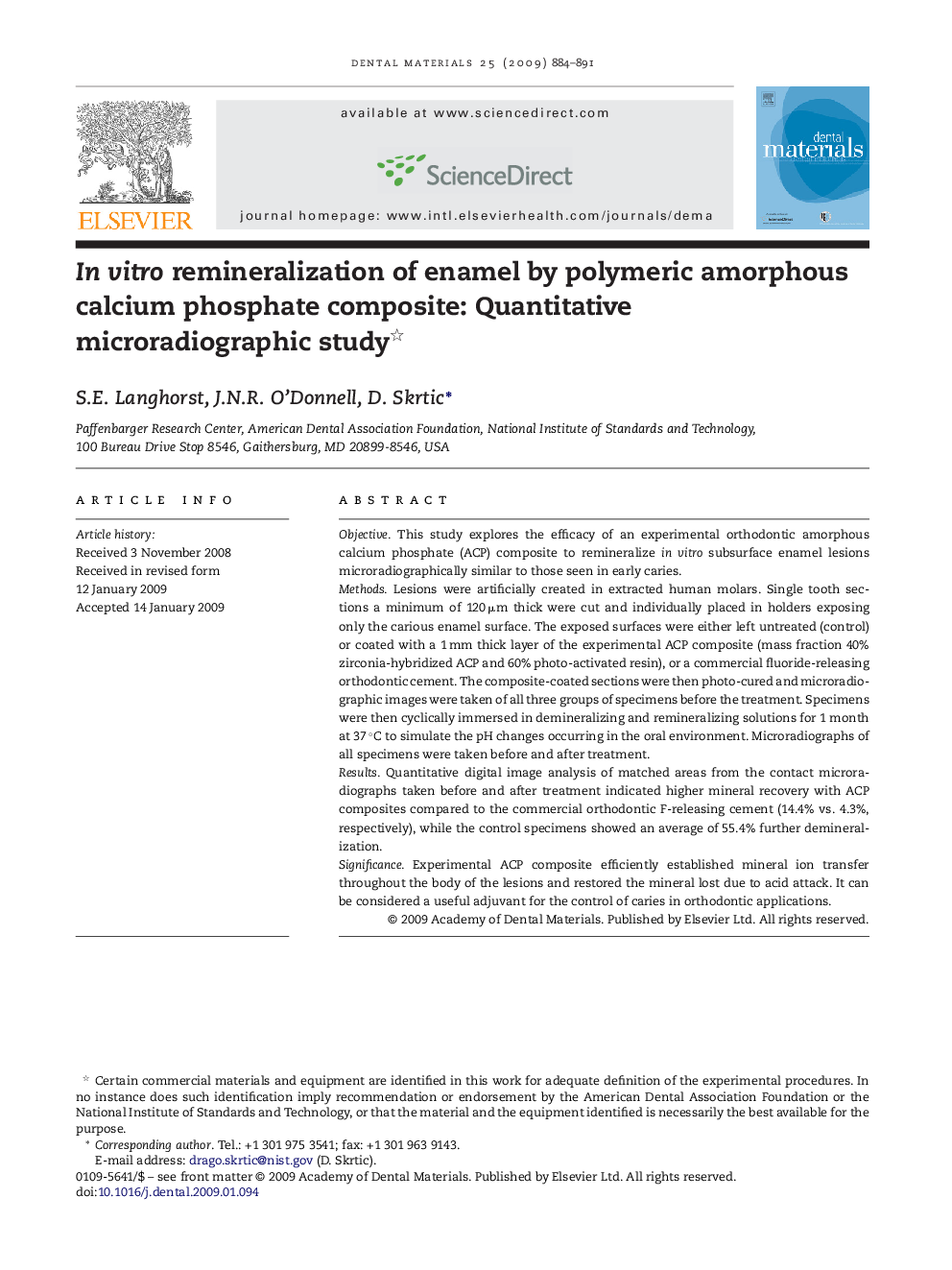| Article ID | Journal | Published Year | Pages | File Type |
|---|---|---|---|---|
| 1422145 | Dental Materials | 2009 | 8 Pages |
ObjectiveThis study explores the efficacy of an experimental orthodontic amorphous calcium phosphate (ACP) composite to remineralize in vitro subsurface enamel lesions microradiographically similar to those seen in early caries.MethodsLesions were artificially created in extracted human molars. Single tooth sections a minimum of 120 μm thick were cut and individually placed in holders exposing only the carious enamel surface. The exposed surfaces were either left untreated (control) or coated with a 1 mm thick layer of the experimental ACP composite (mass fraction 40% zirconia-hybridized ACP and 60% photo-activated resin), or a commercial fluoride-releasing orthodontic cement. The composite-coated sections were then photo-cured and microradiographic images were taken of all three groups of specimens before the treatment. Specimens were then cyclically immersed in demineralizing and remineralizing solutions for 1 month at 37 °C to simulate the pH changes occurring in the oral environment. Microradiographs of all specimens were taken before and after treatment.ResultsQuantitative digital image analysis of matched areas from the contact microradiographs taken before and after treatment indicated higher mineral recovery with ACP composites compared to the commercial orthodontic F-releasing cement (14.4% vs. 4.3%, respectively), while the control specimens showed an average of 55.4% further demineralization.SignificanceExperimental ACP composite efficiently established mineral ion transfer throughout the body of the lesions and restored the mineral lost due to acid attack. It can be considered a useful adjuvant for the control of caries in orthodontic applications.
